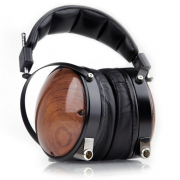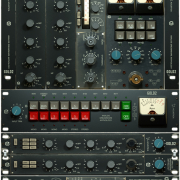The Different Colours of Noise
In essence, noise is a randomly changing, chaotic signal, containing an endless number of sine waves of all possible frequencies with different amplitudes. However, randomness will always have specific statistical properties. These will give the noise its specific character or timbre.
If the sine waves’ amplitude is uniform, which means every frequency has the same volume, the noise sounds very bright. This type of noise is called white noise.
White noise is a signal with the property of having constant energy per Hz bandwidth (an amplitude-frequency distribution of 1) and so has a flat frequency response and because of these properties, white noise is well suited to test audio equipment. The human hearing system’s frequency response is not linear but logarithmic. In other words, we judge pitch increases by octaves, not by equal increments of frequency; each successive octave spans twice as many Hertz as the previous one down the scale. And this means that when we listen to white noise, it appears to us to increase in level by 3dB per octave.
If the amplitude of the sine waves decreases with a curve of about -6 dB per octave when their frequencies rise, the noise sounds much warmer. This is called pink noise.
Pink noise contains equal energy per octave (or per 1/3 octave). The amplitude follows the function 1/f, which corresponds to the level falling by 3dB per octave. These attributes lend themselves perfectly for use in acoustic measurements.
If it decreases with a curve of about -12 dB per octave we call it brown noise.
Brown noise, whose name is actually derived from Brownian motion, is similar to pink noise except that the frequency function is 1/(f squared). This produces a 6dB-per-octave attenuation.
Blue noise is essentially the inverse of pink noise, with its amplitude increasing by 3dB per octave (the amplitude is proportional to f).
Violet noise is the inverse of brown noise, with a rising response of 6dB per octave (amplitude is proportional to f squared).
So we have all these funky names for noise, even though you need to understand their characteristics, but what are they used for?
White noise is used in the synthesizing of hi-hats, crashes, cymbals etc, and is even used to test certain generators.
Pink noise is great for synthesizing ocean waves and the warmer type of ethereal pads.
Brown noise is cool for synthesizing thunderous sounds and deep and bursting claps. Of course, they can all be used in varying ways for attaining different textures and results, but the idea is simply for you to get an idea of what they ‘sound’ like.
At the end of the day, it all boils down to maths and physics.
Here is an article I wrote for Sound On Sound magazine on how to use Pink noise referencing for mixing.
And here is the link to the video I created on master bus mixing with Pink noise.
And here is another video tutorial on how to use ripped profiles and Pink noise to mix.











